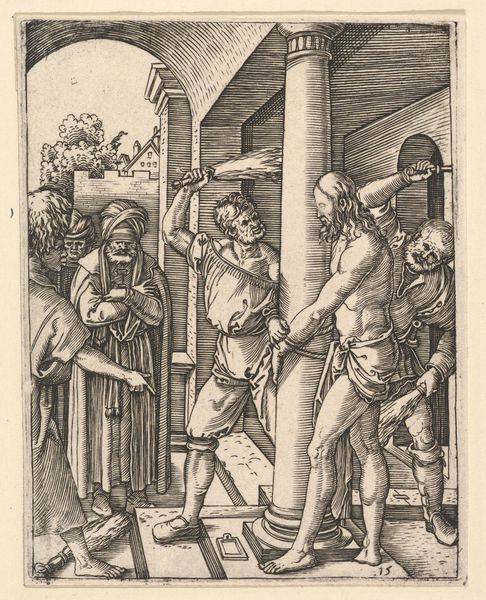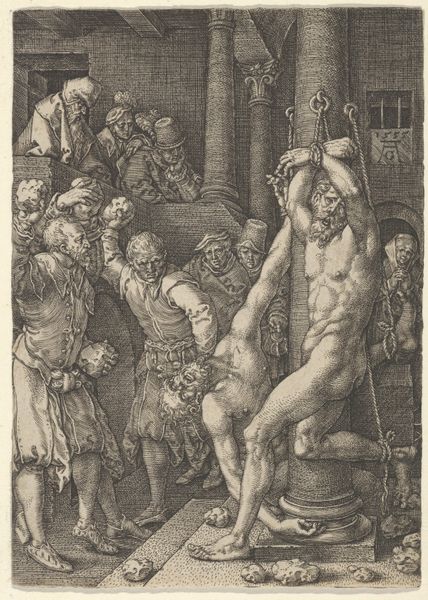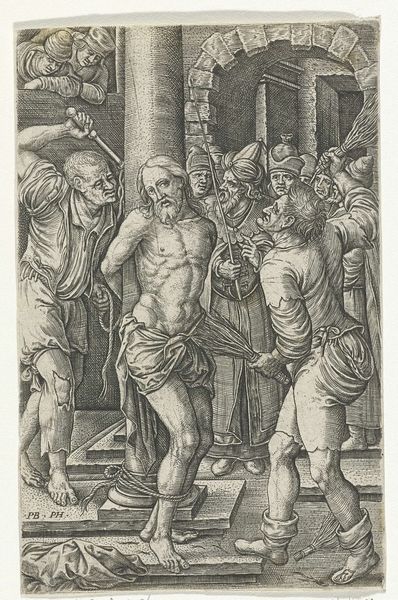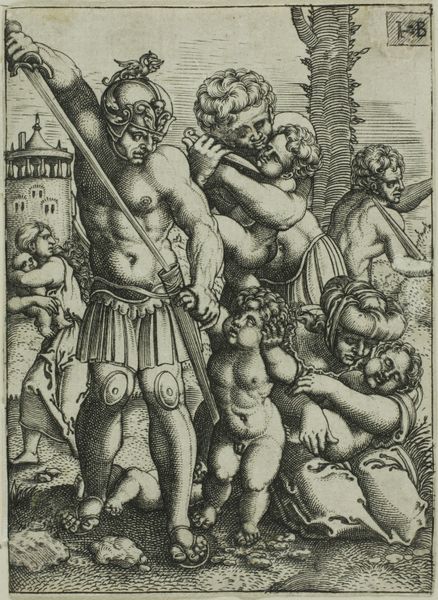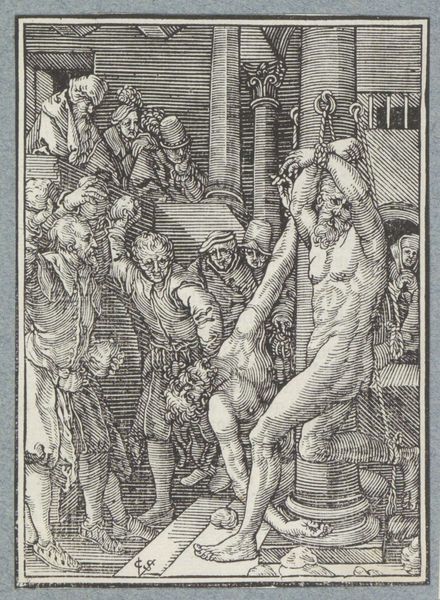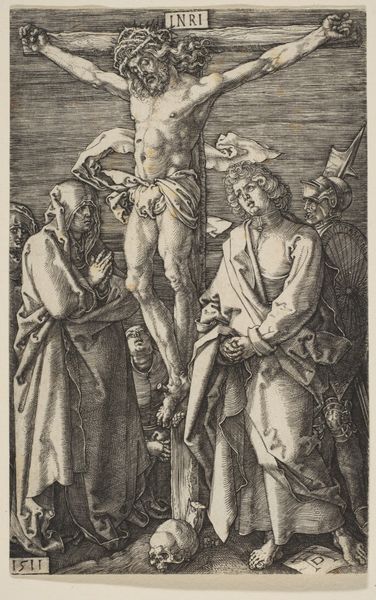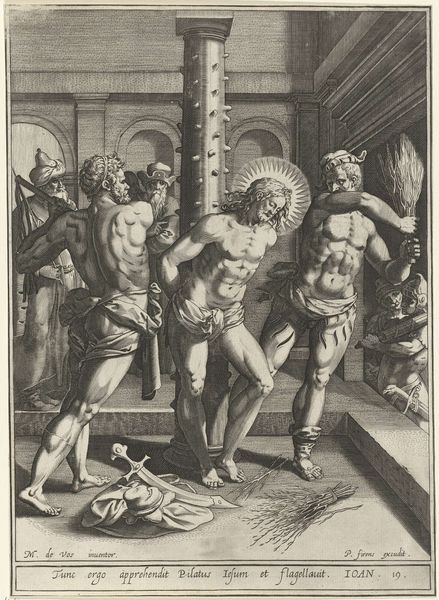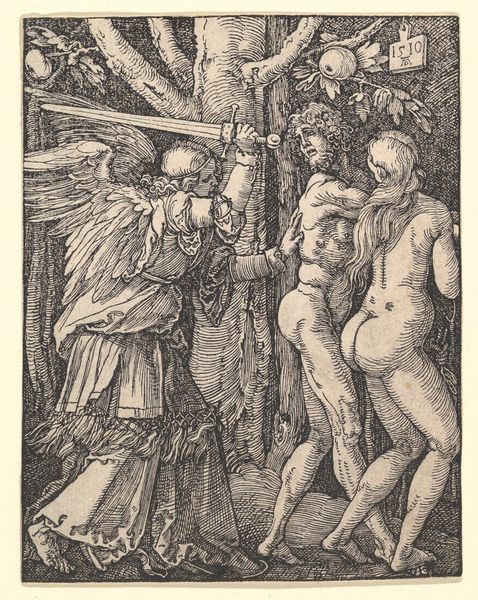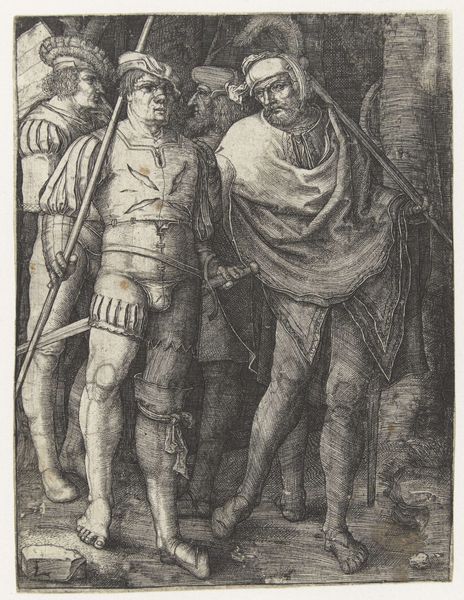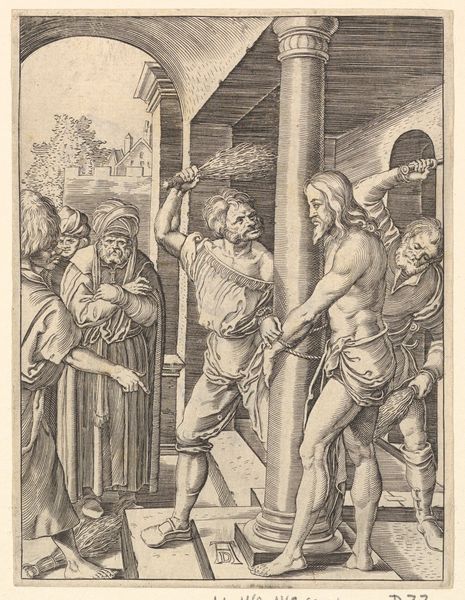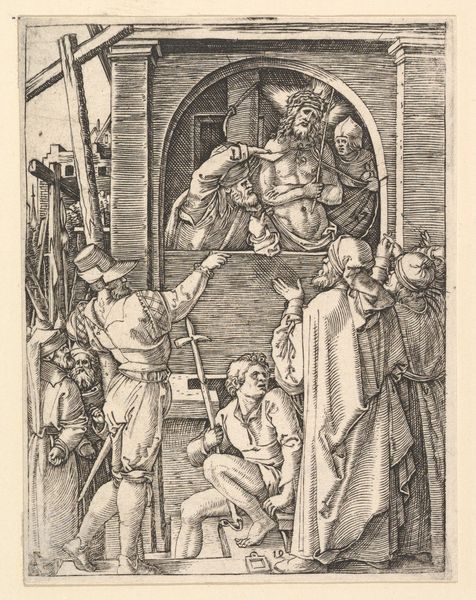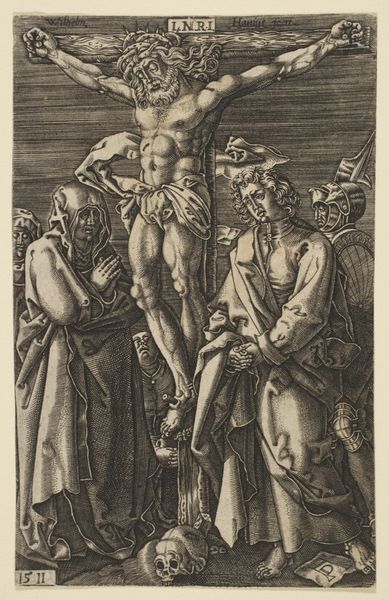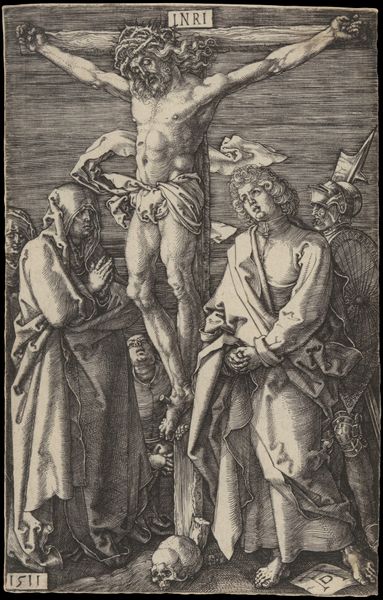
print, engraving
# print
#
figuration
#
line
#
history-painting
#
northern-renaissance
#
engraving
Dimensions: height 117 mm, width 76 mm
Copyright: Rijks Museum: Open Domain
Curator: It's a striking image. What are your first thoughts when you see this print? Editor: So, this is Lucas van Leyden's "The Flagellation of Christ" from 1521, currently held at the Rijksmuseum. It's an engraving, and I’m immediately struck by how incredibly detailed the linework is. It's stark and pretty disturbing. I'm wondering, how does this material and process shape its message? Curator: Exactly! Let's consider the material context: the use of engraving. It's a laborious process, demanding immense skill. Each line is physically etched into a metal plate, then printed. What does this imply about the intended audience and the value placed on the image? Editor: Well, it suggests that this wasn't a cheap, mass-produced image, right? It must have been for a more discerning clientele, who appreciated the craftsmanship and detail involved. Would it be right to suggest then, that print making changed the dynamics between production and consumption in the art world at the time? Curator: Precisely. Engravings, unlike paintings, could be reproduced, making art more accessible, but still requiring skill and resources. This challenges the hierarchy between unique "high art" and more accessible crafts. The meticulous labor involved speaks to the artist's commitment, but also to a growing market for such devotional images. Also, notice the clothing of the figures around Christ - they seem more contemporary than from biblical times. What does this say about the printmaker and the historical narrative presented to the viewer? Editor: That's a very interesting observation - by portraying the figures in contemporary garments, Van Leyden brought this scene of historical brutality closer to his contemporary audience. So, by examining the material and process, we can better understand its intended audience and the shifting artistic landscape of the Northern Renaissance. I appreciate learning about how prints like these expanded both accessibility and cultural reflection on craftsmanship. Curator: Absolutely. And considering prints as multiples created with complex labor, makes one understand that each impression becomes part of a wider economic and social exchange.
Comments
No comments
Be the first to comment and join the conversation on the ultimate creative platform.

